Guitar World Verdict
Sustainable tonewoods and the enduring principles of great guitar design make the Atkins transition from acoustic to electric a thrilling prospect for the vintage-minded player.
Pros
- +
Great aged finish.
- +
Ultra-light weight.
- +
Authentic tones and feel.
Cons
- -
Some players might not be ready to pay £3k without Fender on the headstock.
You can trust Guitar World
Anyone who has played one of Atkin Guitars’ reinventions of pre-war-style acoustics may be surprised to discover that the Kent, UK-based company has decided to set its sights on instruments of a different nature as well as from a different era.
It doesn’t take a genius to see where Atkin drew his influences from for this pair of solidbody, bolt-on neck, single-coil electrics. But rather than slavishly ape Leo Fender’s first two six-string milestones, Atkin has brought his own guitar-building knowledge and love of playing electrics to the table here.
“We’ve been wanting to get into electrics for a while,” Atkin says, “and although there are already lots of boutique makers doing amazing vintage-correct builds, we wanted to produce a modern, player-friendly version with all the vintage vibe but none of the unfriendly spec of the originals.”
With that in mind we have a pair of familiar-looking guitars with one or two surprises up their sleeves. To kick off, the bodies are neither ash nor alder, the timbers usually preferred for these styles of guitar. Plus Alister is keeping an eye out for ways to keep on the right side of environmental issues.
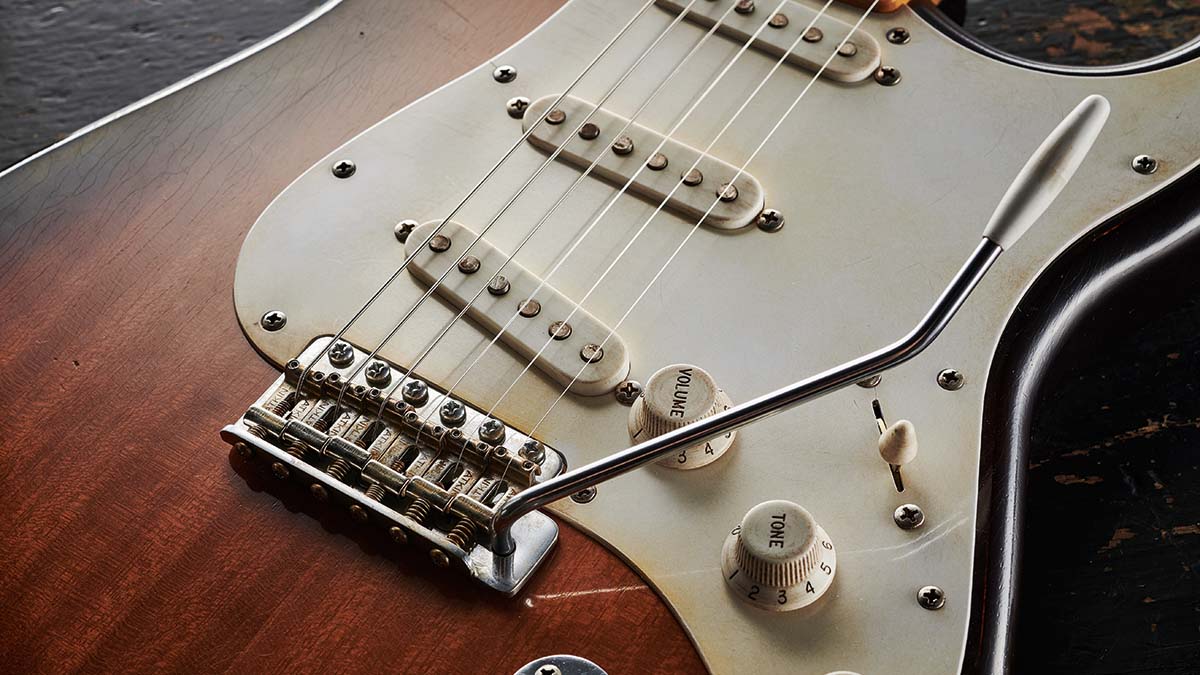
“Yes, we see this as an opportunity to explore more sustainable woods,” he says. “So the main body wood we are using is obeche. Fingerboards are capped with 3mm veneers of either maple, English sycamore, or rosewood, which also means we can take advantage of our off-cut stock of backs and sides from the acoustics we make. We save everything we can to use at a later date. We can get swamp ash or alder if a customer really wants it, but we are currently loving the obeche.”
Atkin has really got into the artificial ageing of his guitars, so it made absolute sense to carry the process over to The Fifty-Two and The Fifty-Four. To that end, the bodies have received a light coating of nitrocellulose, the Fifty-Two in authentic-looking butterscotch and the Fifty-Four a two-tone sunburst.
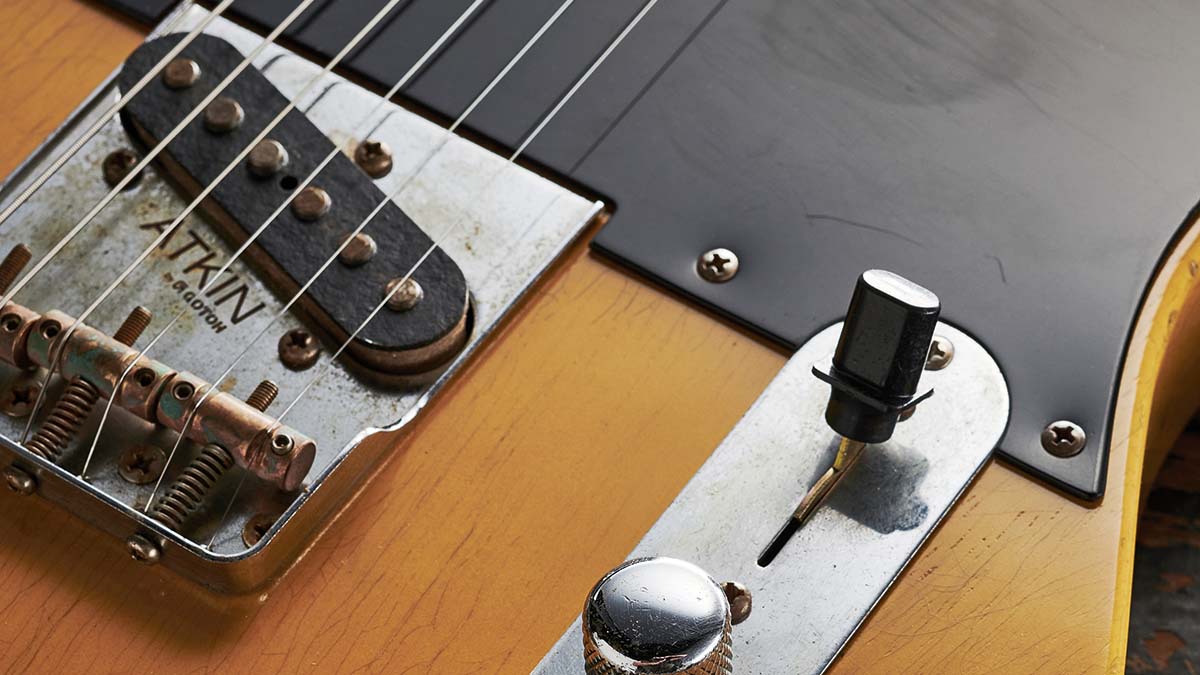
On the Fifty-Four the lacquer has slightly sunk into the two-piece obeche body’s centre join, while the Fifty-Two would appear to be a single lump. However, the lacquer checking is as authentic as any we’ve seen.
Both instruments’ maple necks come with an attractive light flame, and each features a veneer fingerboard of the same timber – meaning there’s no walnut skunk stripe down the back. The necks feature no crazing at all, but Alister stresses the finish on these is as thin as possible, so they’ll probably wear naturally in no time at all.
Obeche being notable for its strength, rigidity and lightness means that these instruments feel featherweight compared with some of the hefty guitars we’ve seen lately – even Custom Shop ones. Both feature Atkin’s ‘access heel’ design for improved top-end reach.
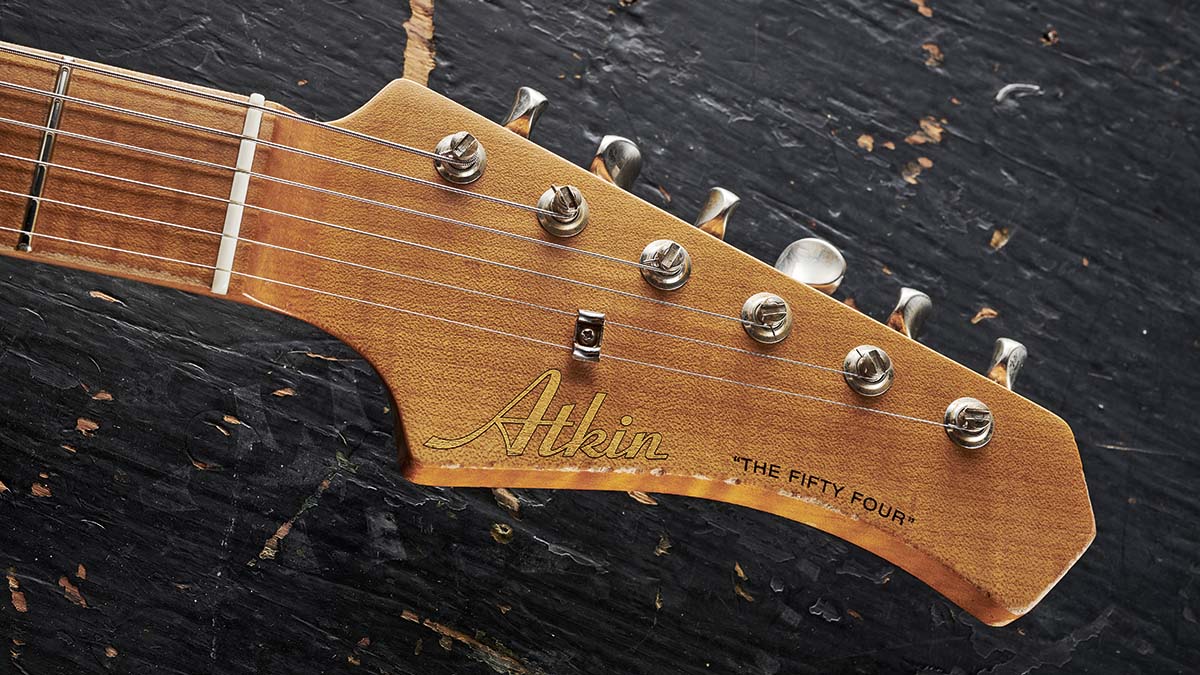
Alister decided to make the pickguards in-house in order to control their vintage accuracy. Hence The Fifty-Two features a nitro-lacquered single-ply black ’guard, and The Fifty-Four a heavily aged single-ply white vinyl one, its edges lightly hand-finished to look worn and vintage.
Both pickups are voiced to sound like the best of each original model’s breed
All the metal hardware including the bridge/tailpieces, tuners and so on, are by Gotoh of Japan. The Fifty-Two features a ‘drop-sided’ T-style bridge plate and pickup housing, which makes string damping a trifle easier. The bridge is also stamped with the company’s name and carries three of Gotoh’s intonation compensated brass saddles.
Likewise, The Fifty-Four’s bridge is classic S-style, with six-screw mounting, steel vibrato block and Atkin-stamped bent steel saddles. Here the Gotoh tuners are of the locking variety, and all hardware is suitably aged.
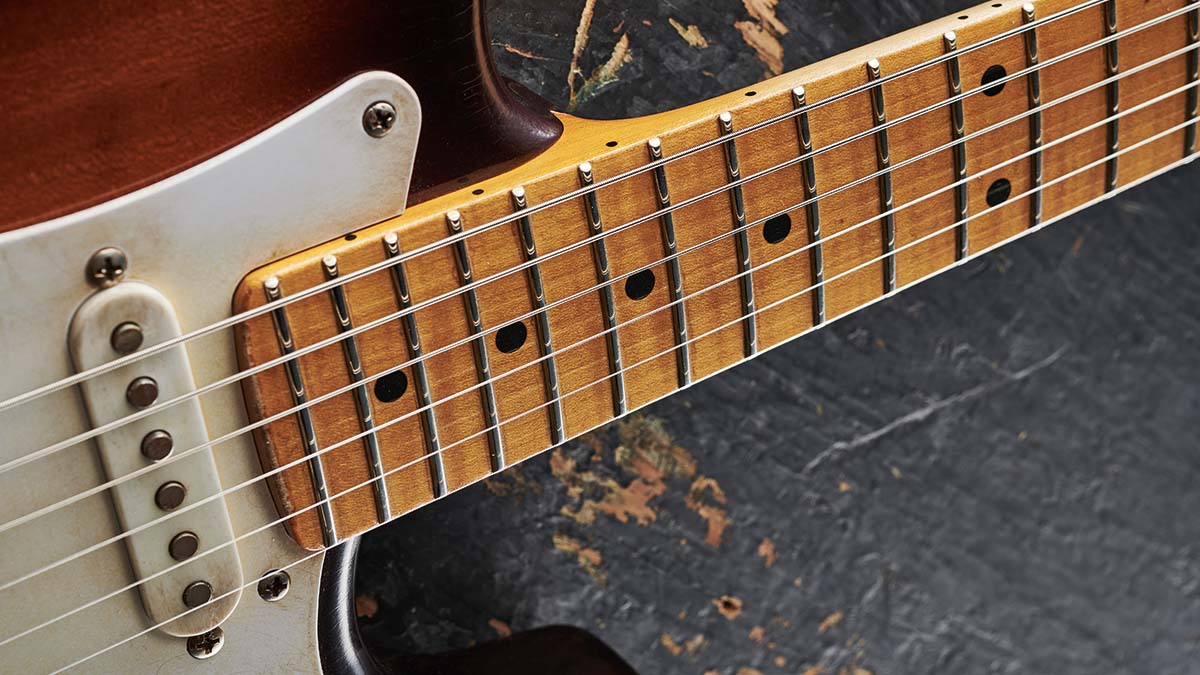
After experimenting with other manufacturers’ pickups, it was decided to bring that operation in-house as well. Both pickup models here have been designed from the ground up to be vintage output, and voiced to sound like the best of each original model’s breed.
Lastly, the company has designed its own headstock. There’s always potential here to wreck an otherwise great-looking guitar. On his acoustics, Alister really nailed it with his pyramid-top design, and for the electrics he’s kept an angular outline that we think works well and should become familiar once these instruments are regularly seen around.
Feel & Sounds
The first thing one notices on picking up either guitar is its incredible lightness in weight. Next to this reviewer’s own medium-to-lightweight Tele and Strat, each one feels like a feather on a strap. It’s actually a really lovely feeling and, for any of you who are ‘of a certain age’ (as is this reviewer), this might prove to be a pleasant surprise.
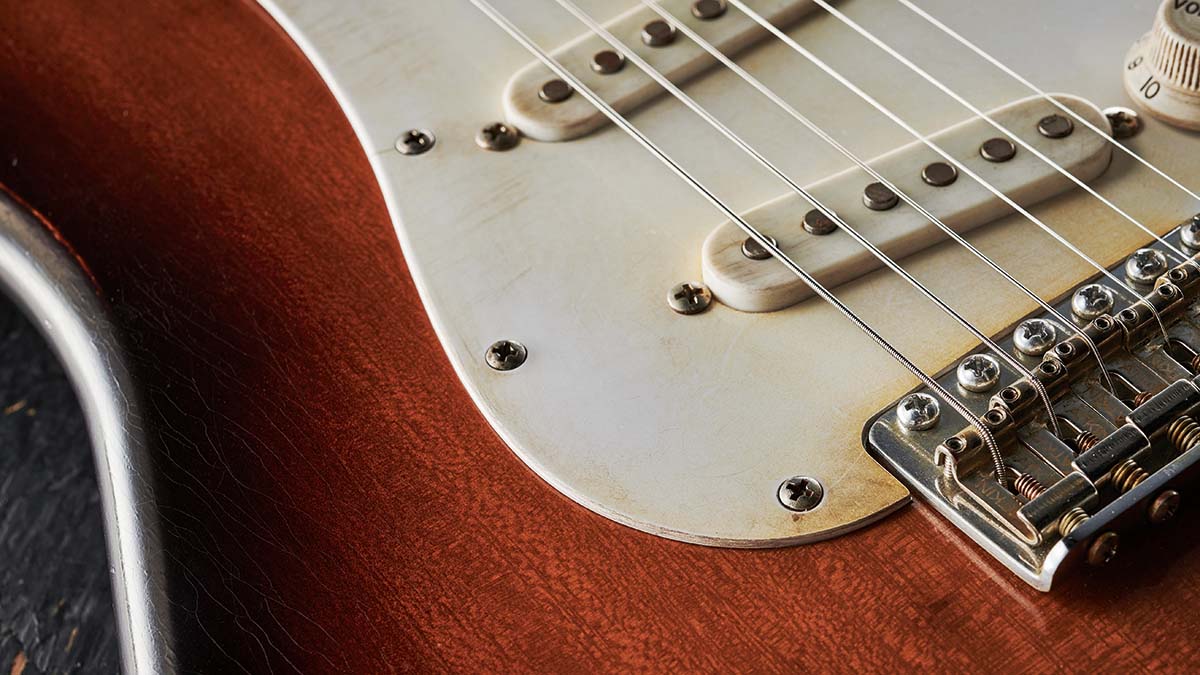
The two necks are all but identical in size and therefore feel. Each comes with 22 medium-fine but tall frets on a 254mm (10‑inch) radius fingerboard, so offers much of an early original’s feel but with the type of bending and vibrato facility found on more modern instruments.
The necks are neither too slim nor too fat. Both measure 21mm at the 1st fret and 24mm at the 12th; they’re perfect medium C-shaped handfuls with not too much shoulder – hence feeling fulsome but in no way ‘clubby’.
In fact, both are shallower than this reviewer’s own Custom Shop Strat and Tele. Strung with D’Addario 0.010 to 0.046 strings as standard, they feel lighter under the fingers, if anything, with the tall frets providing enough purchase to make bends and vibrato seem natural and fuss‑free on the relatively flat fingerboard. The dressed-away heels do make upper-fret control marginally easier, too.
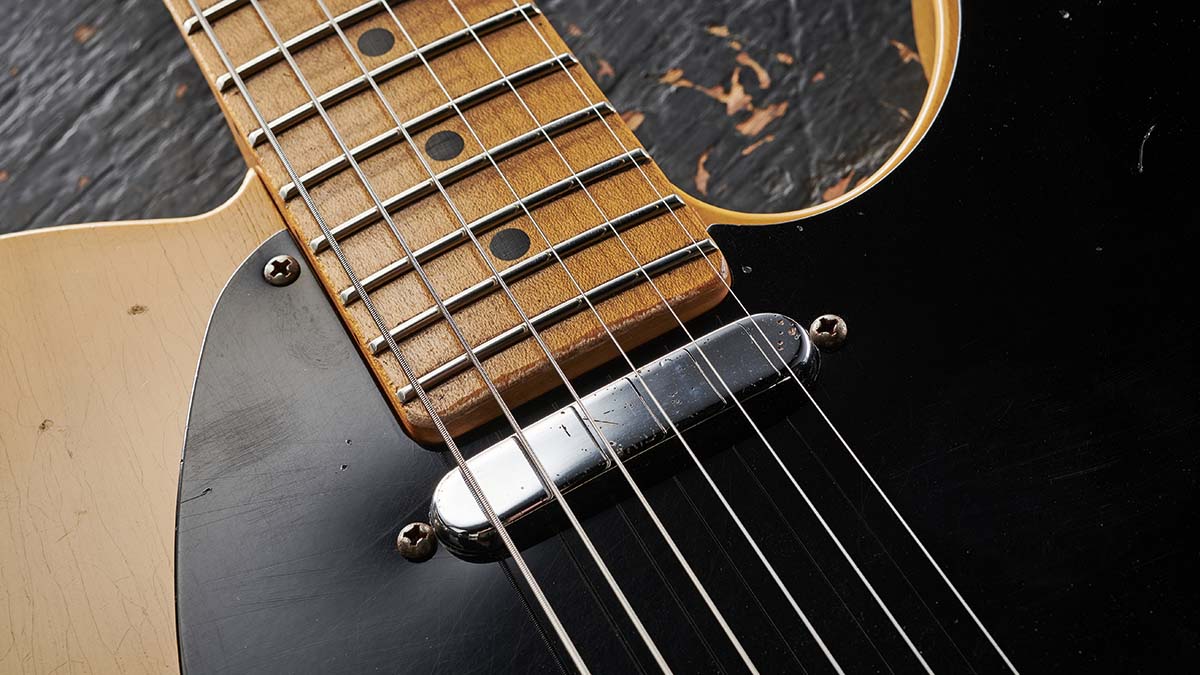
With the CS Tele and Strat on hand to compare sounds, it’s going to be interesting to see how the obeche bodies on both the Atkins stand up to the swamp ash and alder of the Fenders. Output-wise, there’s not that much in it, the Fenders perhaps pushing our Blues Junior harder into the front-end but likely as not due to the Fenders’ pickups being set closer to the strings (a personal preference).
Sonically, both guitars are definitely more vintage-sounding than the Fenders, too, which both have marginally hotter pickups – Fat ’60s on the Strat and Custom Shop Hand Wound on the Tele.
Yes, they are obviously derived from two of the most famous electric guitar designs ever, and yet they are most definitely imbued with a character of their own
But neither Atkin is a weakling; in fact, the difference is more in The Fifty-Two and Fifty-Four’s clarity, with the latter’s in-between sounds noticeably more twangy, and The Fifty-Two also displaying greater clarity than the Tele across all switch selections.
Many would prefer the more ‘authentic’ sound of the Atkin instruments, since these particular Fenders were chosen specifically for their darker and less overtly 50s sounds. Indeed, it’s hard to imagine how any hardened S or T fan would find them wanting in any department.
Verdict
Alister Atkin never does anything half-heartedly. His acoustics have genuinely broken the barrier of not being one of the ‘big names’ but being accepted as superlative instruments in their own right.
He and his team have clearly taken that same approach with the new electrics. Yes, they are obviously derived from two of the most famous electric guitar designs ever, and yet they are most definitely imbued with a character of their own, not merely copied from Fullerton’s finest.
That said, these are not as modernised as other Fender derivatives such as Anderson, Charvel and Suhr, but with their beautifully aged finishes, fine frets and vintage voices, they are more of a direct alternative than most models from the aforementioned brands.
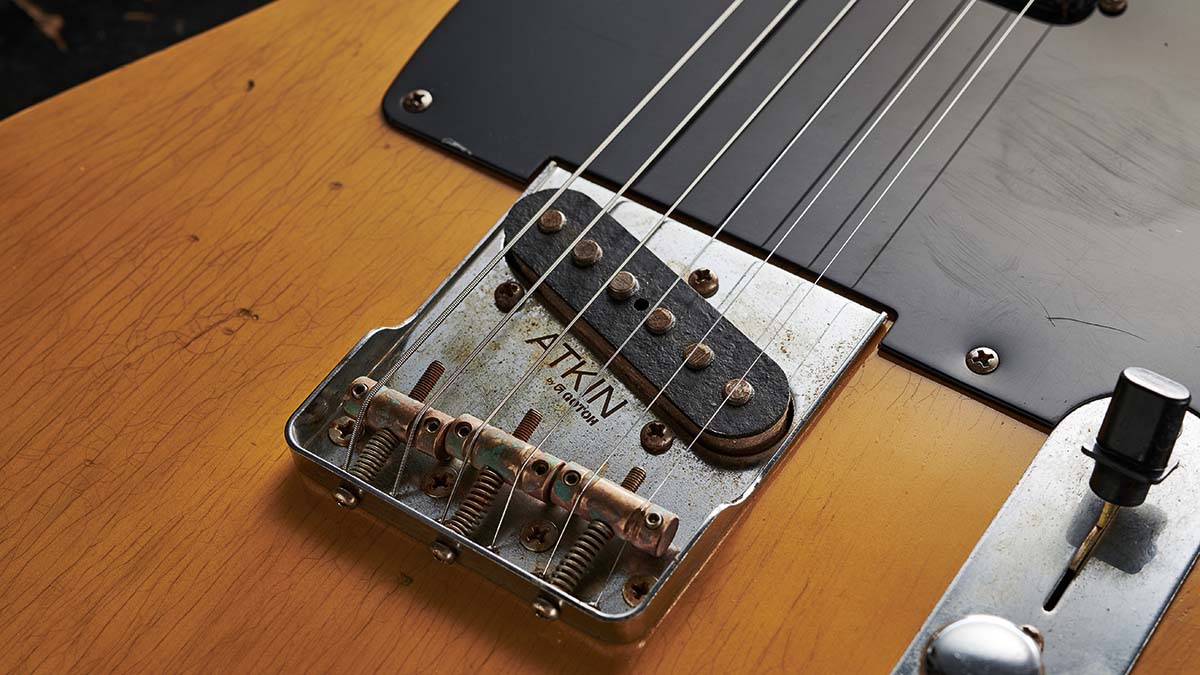
We applaud the use of obeche as a body wood in these new models. It seems to impart no distinct tone of its own, but it’s super-light weight and higher sustainability than the ever-decreasing stocks of swamp ash, for instance, make it a particularly fine choice, and one that other makers are turning to, also.
Finally, it seems that even faithful ‘brand loyalists’ are beginning to see there is actually quality and innovation to be had from the benches of smaller makers with a much lower output.
We know that Atkin’s acoustic dealers can’t wait to get their hands on these and the other models Alister has in the pipeline, and that in itself should give those looking for a boutique S- or T-style guitar the confidence to go out and try one. Do so and we’re pretty sure you’ll not be disappointed.
Specs
Atkin The Fifty-Two
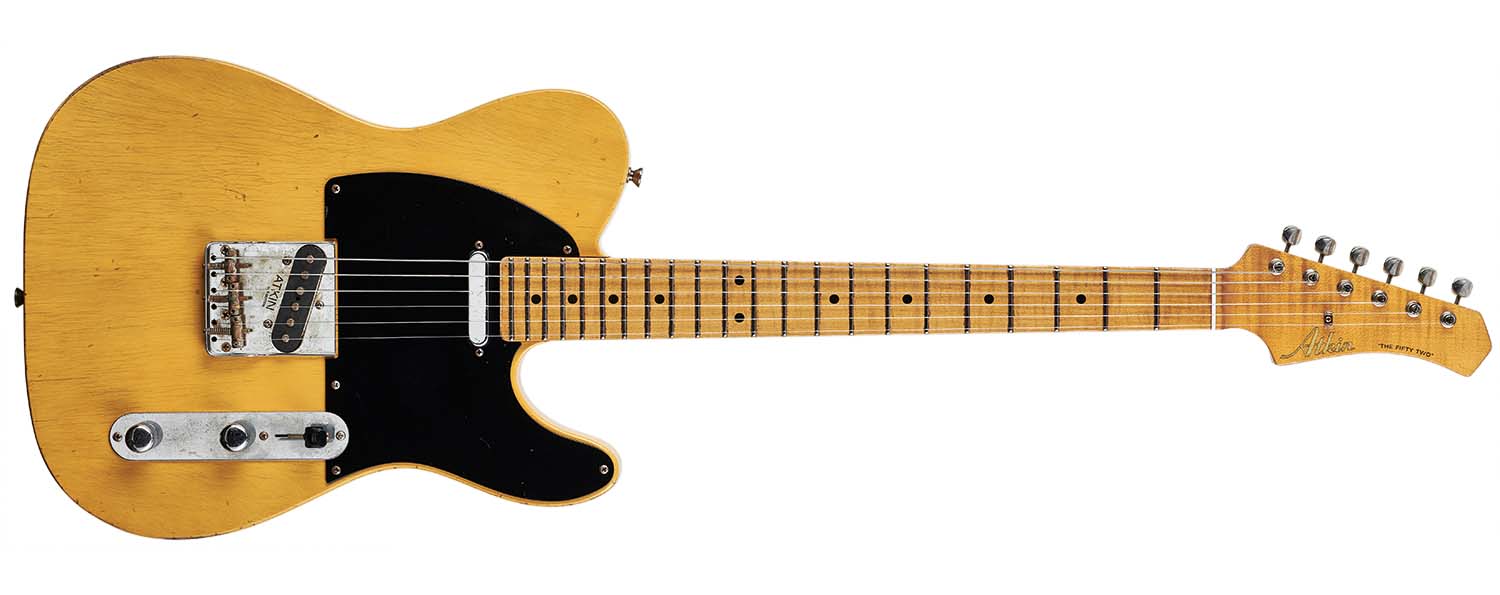
- PRICE: £2,999 (inc case)
- ORIGIN: UK
- TYPE: Single-cutaway, solidbody electric
- BODY: Obeche
- NECK: Maple, lightly flamed with medium C vintage profile
- SCALE LENGTH: 648mm (25.5”)
- NUT/WIDTH: Bone/42mm
- FINGERBOARD: Lightly flamed 3mm maple veneer, 254mm (10”) radius
- FRETS: 22, medium fine, tall profile
- HARDWARE: Gotoh ‘drop-sided’ T-type bridge/tailpiece and pickup housing, Gotoh vintage 6-a-side tuners and strap buttons, lacquered black pickguard
- STRING SPACING, BRIDGE: 55.5mm
- ELECTRICS: Atkin T-style bridge and neck pickup, CTS 250k pots, Sprague orange drop capacitor, Switchcraft jack, CRL 3-way pickup selector
- WEIGHT (kg/lb): 2.9/6.4
- OPTIONS: Call for options
- RANGE OPTIONS: Call for options
- LEFT-HANDERS: Not yet
- FINISH: Aged butterscotch nitro-cellulose, plus a range of vintage and special finishes to come
Atkin The Fifty-Four
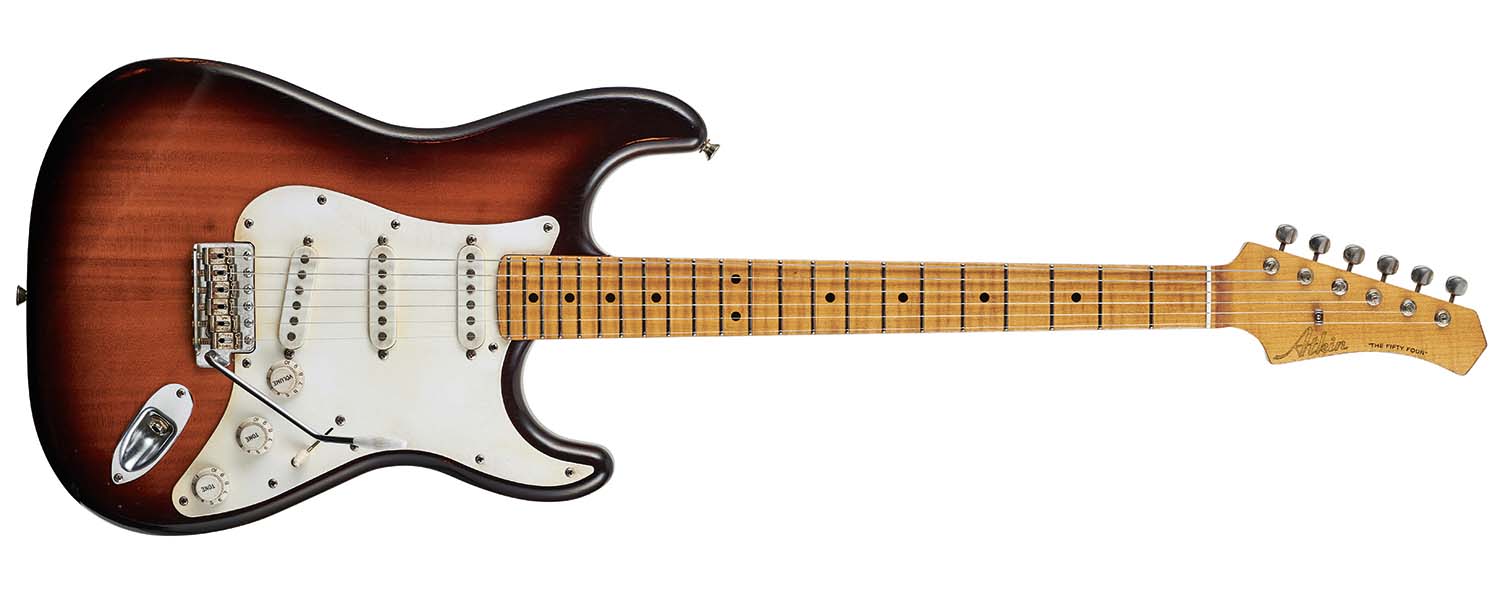
- PRICE: £2,999 (inc case)
- ORIGIN: UK
- TYPE: Double-cutaway, solidbody electric
- BODY: Obeche (2-piece)
- NECK: Maple, lightly flamed with medium C vintage profile
- SCALE LENGTH: 648mm (25.5”)
- NUT/WIDTH: Bone/42mm
- FINGERBOARD: Lightly flamed 3mm maple veneer, 254mm (10”) radius
- FRETS: 22, medium fine, tall profile
- HARDWARE: Gotoh 6-screw vintage S-type bridge/tailpiece, Gotoh vintage 6-a-side tuners and strap buttons, aged, single-ply white nylon pickguard
- STRING SPACING, BRIDGE: 56mm
- ELECTRICS: Atkin S-style bridge, middle and neck pickups, CTS 250k pots, Sprague orange drop capacitors, Switchcraft jack, CRL 5-way pickup selector
- WEIGHT (kg/lb): 3.3/7.275
- OPTIONS: Call for options
- RANGE OPTIONS: Call for options
- LEFT-HANDERS: Not yet
- FINISH: Aged two-tone sunburst nitro-cellulose, plus a range of vintage and special finishes to come
- CONTACT: Atkin Guitars
In the late '70s and early '80s Neville worked for Selmer/Norlin as one of Gibson's UK guitar repairers, before joining CBS/Fender in the same role. He then moved to the fledgling Guitarist magazine as staff writer, rising to editor in 1986. He remained editor for 14 years before launching and editing Guitar Techniques magazine. Although now semi-retired he still works for both magazines. Neville has been a member of Marty Wilde's 'Wildcats' since 1983, and recorded his own album, The Blues Headlines, in 2019.
“It holds its own purely as a playable guitar. It’s really cool for the traveling musician – you can bring it on a flight and it fits beneath the seat”: Why Steve Stevens put his name to a foldable guitar
“Finely tuned instruments with effortless playability and one of the best vibratos there is”: PRS Standard 24 Satin and S2 Standard 24 Satin review












